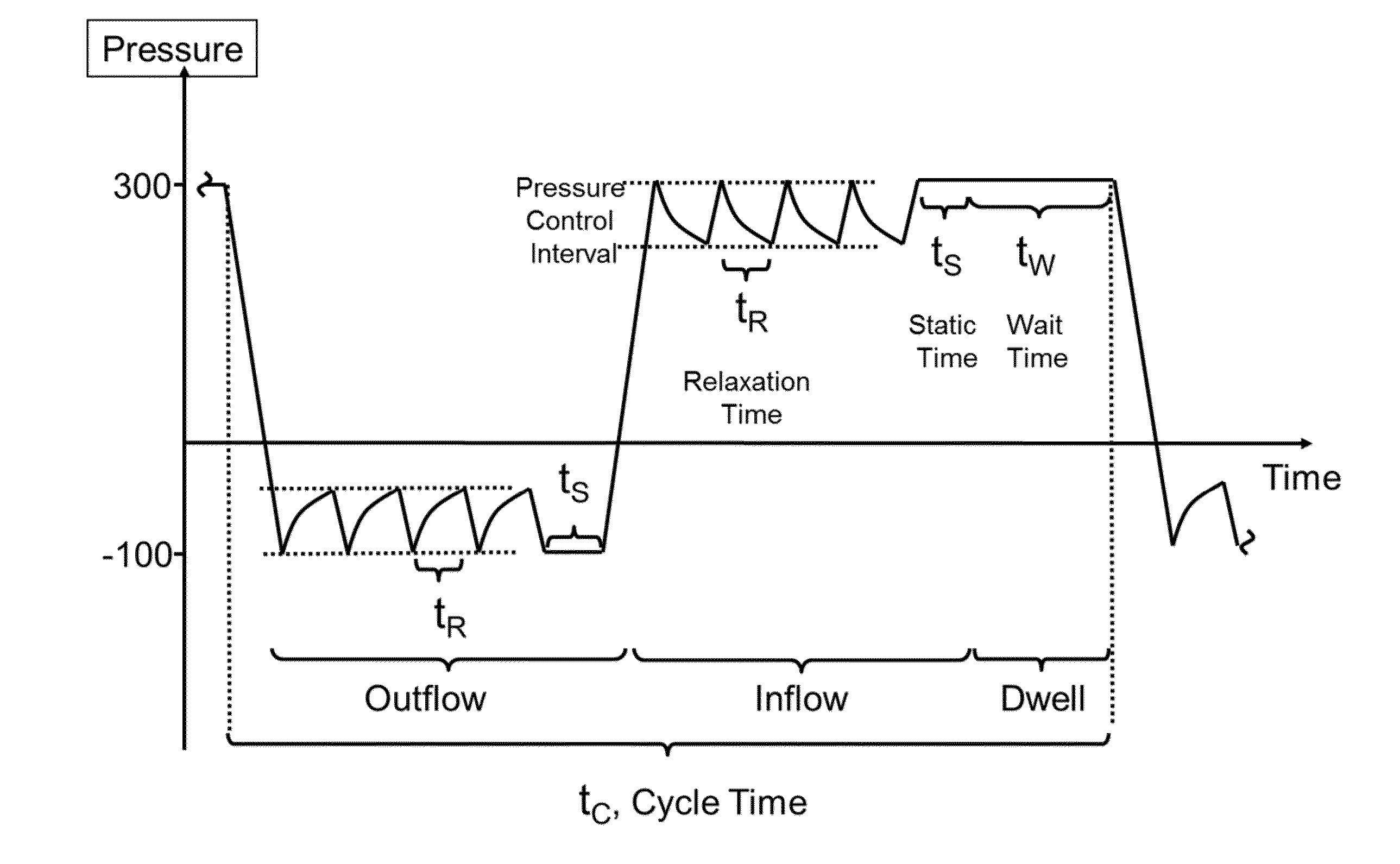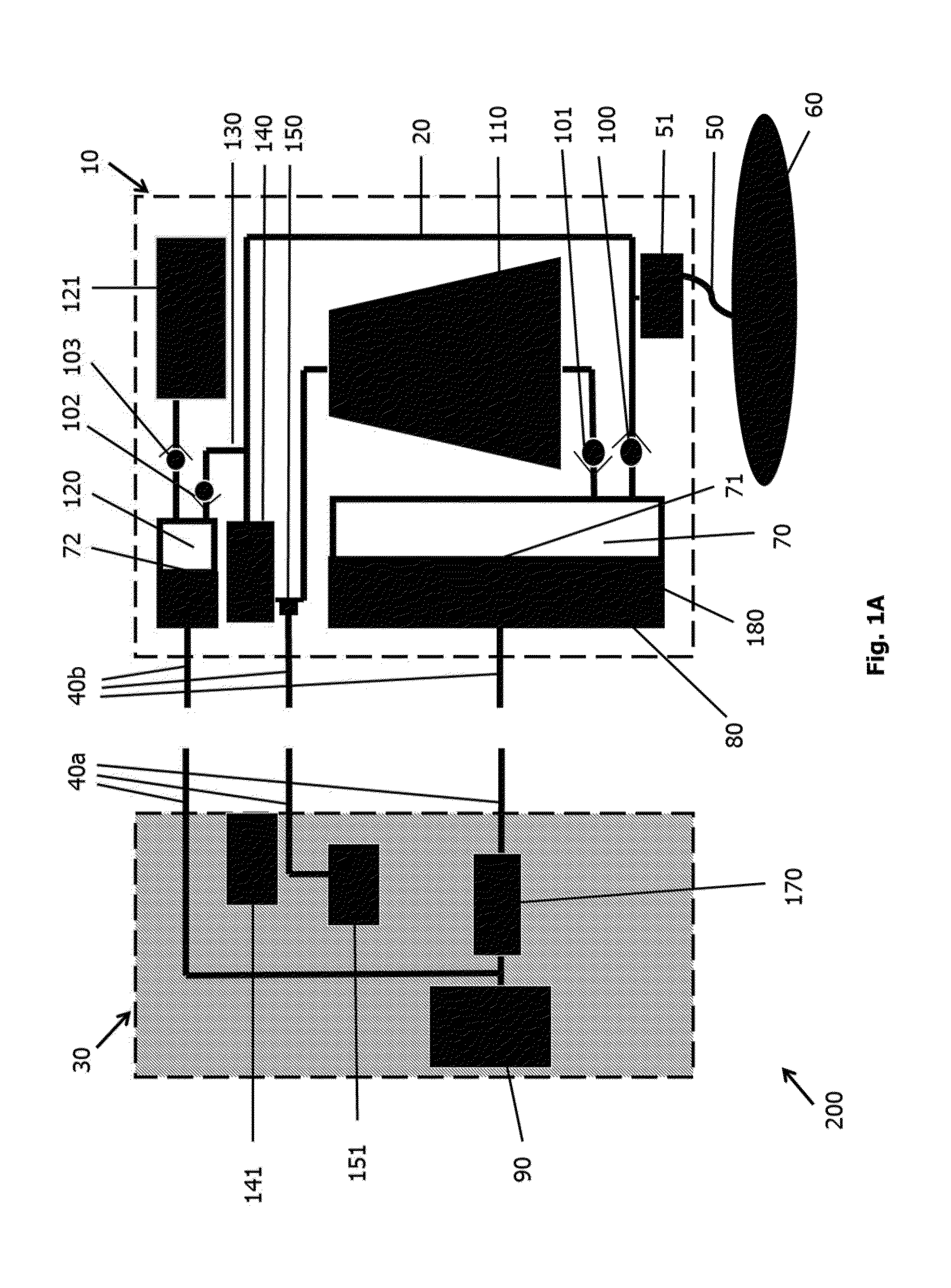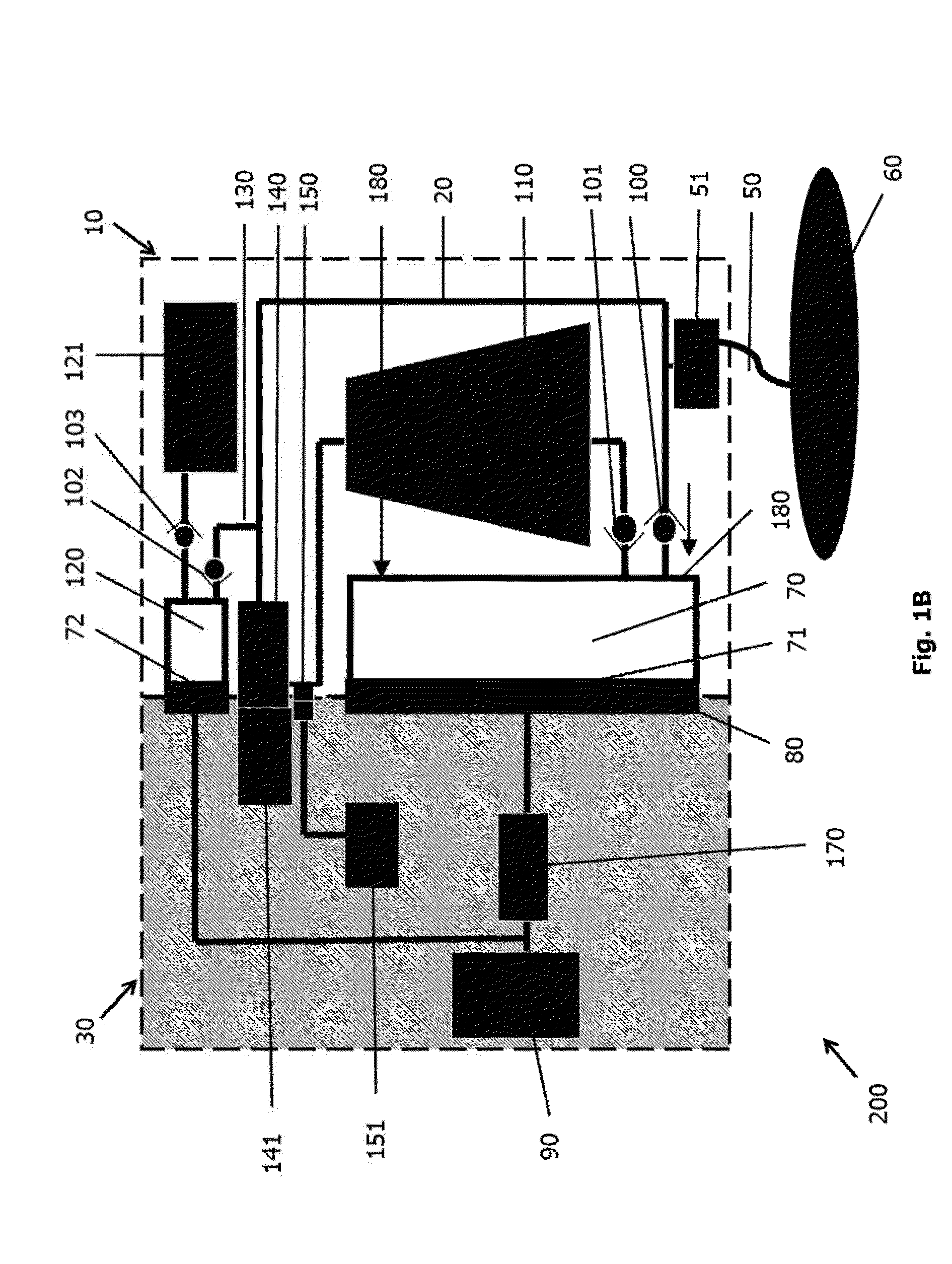Sensing system for detecting a substance in a dialysate
a dialysate and dialysate technology, applied in the field of dialysate devices, can solve the problems of affecting the ability of the body to adequately remove toxic waste in the blood, and affecting the accuracy of dialysis results
- Summary
- Abstract
- Description
- Claims
- Application Information
AI Technical Summary
Benefits of technology
Problems solved by technology
Method used
Image
Examples
Embodiment Construction
[0087]Referring to FIG. 1A, there is shown one embodiment of the disclosed dialysis device (200).
[0088]The dialysis device comprises a disposable housing (10) having a flow path in the form of conduit (20), a controller in the form of a control housing (30) for controlling the operation of the disposable housing (10). In this figure the disposable housing (10) and control housing (30) are not operably connected to each other. The disposable housing (10) and control housing (30) comprise interface means in the form of a conduit connector (40a) disposed on said control housing (30) and (40b) disposed on the disposable housing (10) capable of connecting the control housing and the disposable housing. The disposable housing (10) and control housing (30) are brought into operative engagement when the conduit connector (40a) is brought into locking engagement with conduit connector (40b) The conduit (20) of the disposable housing (10) is fluidly sealed from the control housing (30) and co...
PUM
 Login to View More
Login to View More Abstract
Description
Claims
Application Information
 Login to View More
Login to View More - R&D
- Intellectual Property
- Life Sciences
- Materials
- Tech Scout
- Unparalleled Data Quality
- Higher Quality Content
- 60% Fewer Hallucinations
Browse by: Latest US Patents, China's latest patents, Technical Efficacy Thesaurus, Application Domain, Technology Topic, Popular Technical Reports.
© 2025 PatSnap. All rights reserved.Legal|Privacy policy|Modern Slavery Act Transparency Statement|Sitemap|About US| Contact US: help@patsnap.com



